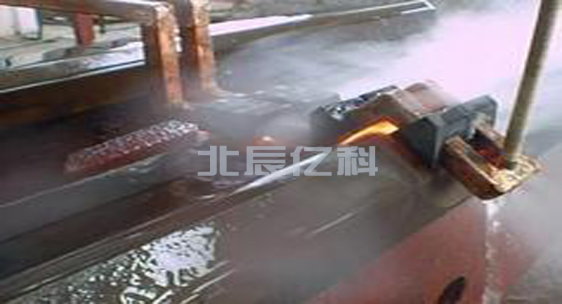Technology Exchange
High-frequency quenching of machine tool rails
With the continuous development of the domestic industrial situation, the market demand of the machine tool industry has increased in recent years, and the quality requirements of users for machine tools have become higher and higher. One of the keys to the quality and life of a machine tool depends on the accuracy of the machine tool's guide rail surface and the quenching process requirements. If the guide rail surface of this machine tool is not quenched, then the accuracy and life of this machine tool are not guaranteed.
This system is a high-frequency quenching process for the guide rail, equipped with a set of fully automatic quenching equipment, including: high-frequency heating part, cooling part and mechanical part. This system uses two high-frequency heating power supplies, which are fixedly installed on both sides of the guide rail. The sharp corners of the guide rail are quenched by a profiling inductor to reach the quenching hardness and layer depth; the cooling part is mainly for the high-frequency power supply and the induction coil. And the workpiece is cooled. The mechanical part is mainly driven by the roller to move the guide rail, so that the guide rail passes through the sensor at a uniform speed, while cooling and moving the workpiece are controlled. The workpiece is manually loaded, and the finished product needs to be manually unloaded. Other processes are automatic Finish.
Technological process: manual loading of the workpiece → positioning → heating → cooling → manual loading of the workpiece.

Features:
· IGBT transistor as an inverter device consumes only one-fifth of the high-frequency equipment of electronic tubes;
· Adopt all-digital embedded digital control system, higher heating precision;
· No radiation to human body, safe and environmentally friendly;
· Small size, light weight, easy to move;
· Low voltage output, safe and reliable;
· Simple operation and convenient maintenance;
· With sound and light alarm protection functions such as overvoltage, overcurrent, overheating, lack of phase, lack of water, abnormal load, and loss of control;
· With manual mode, automatic mode and temperature control mode, multiple modes can be switched freely;
· Real-time display of heating frequency, current and time, and draw time-current curve;
· Constant power and constant current control.


 Scan and follow!
Scan and follow!